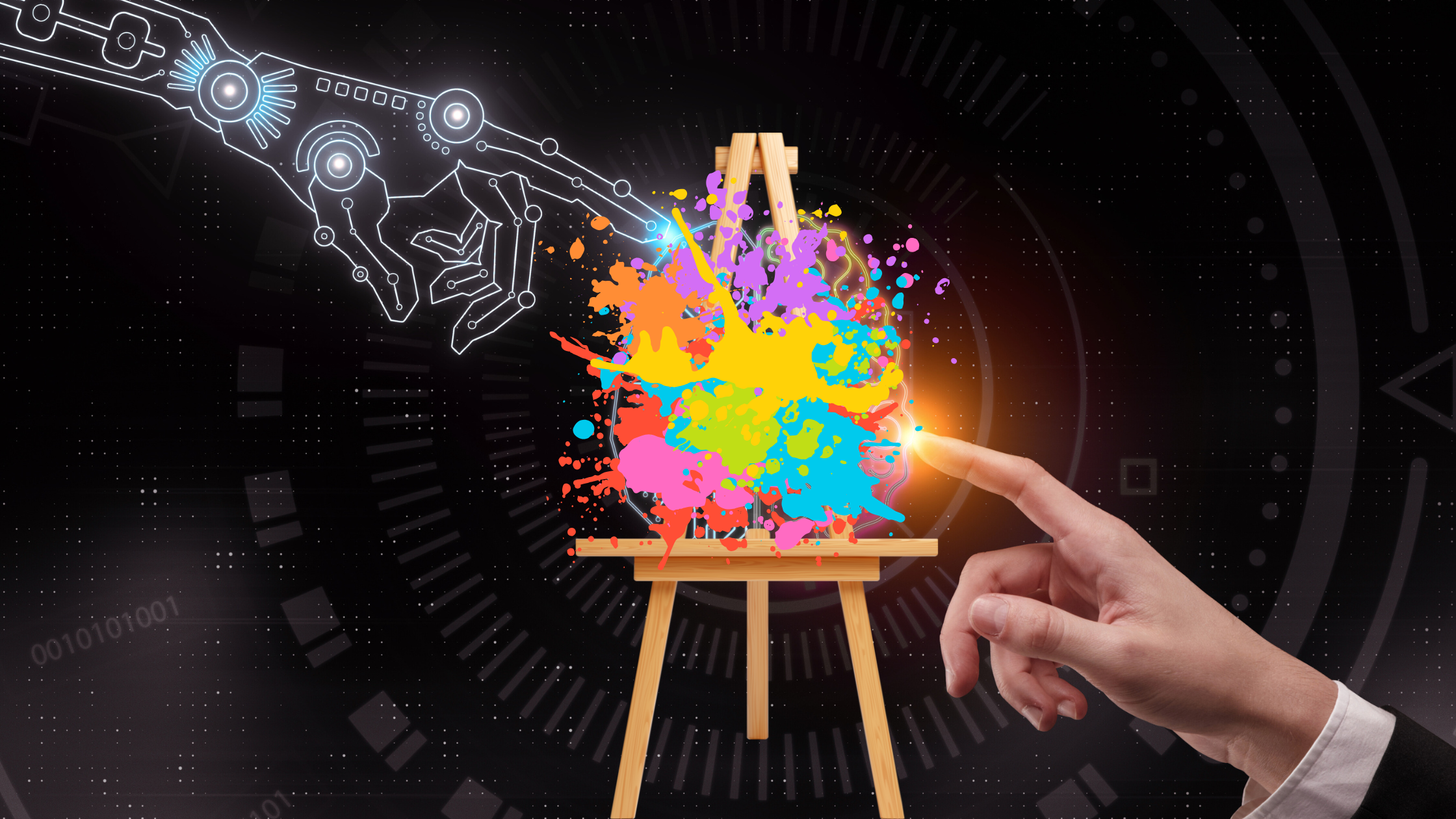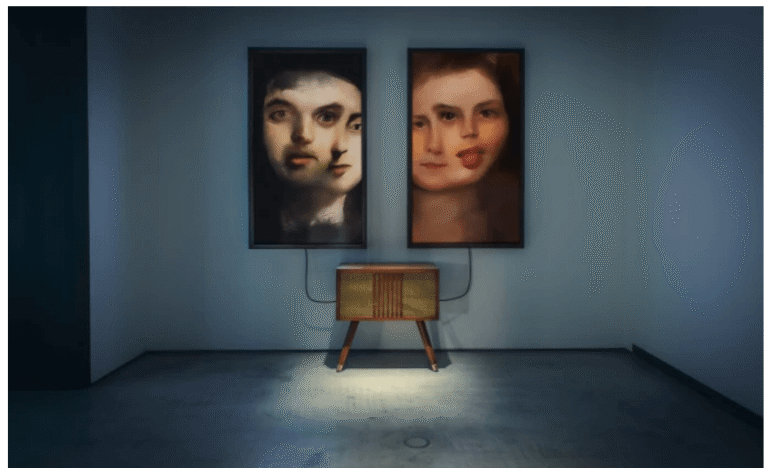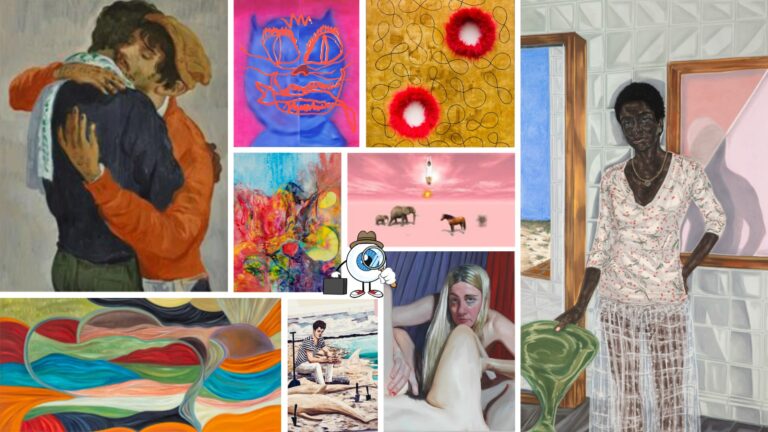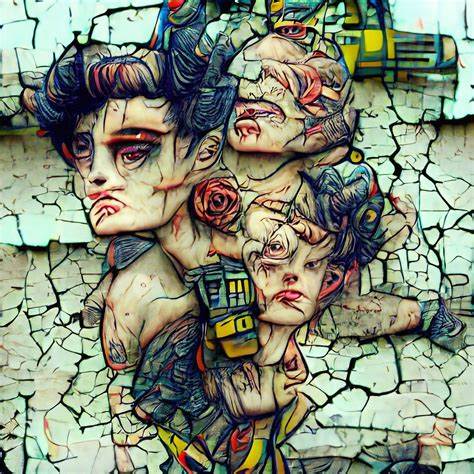It's 2025 and more than ever, art and technology go hand in hand - not as rivals, but as allies. Artificial intelligence, so much debated and sometimes feared, has proved to be a powerful tool for expanding the field of creation for artists. And here's a provocation: what if AI wasn't the end of sensibility, but a bridge to new ways of feeling and exploring it?
For those of you who don't know me, I'm Sabrina Brito, an entrepreneur in the technology and communications sector, and Bim BritoI am a visual artist trained at EAV - Parque Lage. In recent years I've started studying Smart Cities and this has led me to conclude that in a natural process of making cities smarter, art and technology usually go hand in hand in order to awaken positive feelings, such as JOY for its citizens.
And so, within this context and reflecting on the fact that art has always been linked to the time in which it is created, I began to write this article, which results in a reflection on art and artificial intelligence and tries to show how AI can be an ally for artists, helping them to expand their sensibility rather than limiting or replacing it.
We live in an age of data, visual overload and hyperconnection. Against this backdrop, technology can also be used to amplify the voice of artists, open up new languages and democratize access to creation. Read on to the end.
AI as an extension of the hand and gaze
Software that helps visualize compositions, test colors, generate sketches or transform data into visual art doesn't replace the artist - it just expands their range of possibilities. Intuition, a critical eye, gesture - all this remains human, sensitive and unique.
Artificial intelligence doesn't have to take the lead from the artist's soul. It can be used as a digital paintbrush, a laboratory for experimentation, a mirror that reflects the world in a different way. When placed at the service of creation, technology doesn't interfere - it enhances.
How artists can benefit from technology:
- More accessible and powerful creative tools
Artists now have AI-based software that helps them experiment with colors, shapes, compositions and styles. This shortens the time between conception and visualization of an idea, making room for more focus in the creative process.
- Expanding languages and formats
The fusion of art and data, augmented reality, NFT, mapped projections and immersive installations allows art to dialogue with urban space, the body and the public's experience in an innovative way - as in his smart city with art project, for example.
- Democratizing visibility
Digital platforms and recommendation algorithms can help independent artists reach audiences that would previously have been out of their reach. AI also helps with curation, cross-referencing interests and contexts to connect artists to ideal opportunities and audiences.
How AI can enhance artistic work without influencing the artist's sensibility
- AI as a tool, not a creator
When the artist uses AI as a support - to sketch, test palettes, generate variations or visualize concepts - the sensitivity remains 100% human. The AI acts as a brush for experimentation, not as the author of the work. Artists already use technological tools to aid their creative processes, such as tests in design programs like photoshop, ilustratos, canvas, etc. AI is just a more advanced resource that will optimize time and will probably understand the artist's style, resulting in more coherence and efficiency.
- Intuition is artistic
AI can suggest paths, but it's up to the artist to choose, edit, refine and often subvert these suggestions. This reinforces the role of the artist as the critical eye and soul of the work.
- Exploring new discourses
AI allows artists to analyze social, environmental or historical data to create works that connect with the present. This broadens critical awareness and repertoire, without taking away from the authorship or emotion of the work.
- Facilitator of experimentation
AI doesn't impose limits: it challenges them. Sensitive and attentive artists use technology as a poetic laboratory, where mistakes become discoveries and the unexpected becomes style. In the past, artists did their studies with pencil and paper.... in the exhibitions of great and famous artists there is always a section where we can see the sketches... previous studies. Well, it's exactly the same, making a simple comparison we can say that AI is for the most connected contemporary artists what paper was for the older ones during the study process that precedes artistic production.
Algorithmic curation, expanded reach
An important and little-talked-about aspect is the importance of the artist's digital presence. An artist who has digital communication channels with their works, stories, portfolios etc. will be ranked by the algorithms, which allows previously invisible artists to be found, recommended and celebrated.
By crossing interests, styles and themes, AI can also help build bridges between works and audiences - broadening the reach of curators who seek out new talent without compromising on substance.
Sensitivity can't be taught by machines
And here's the central point: sensitivity cannot be programmed. It is born out of life, our history, pain, doubt, joy and listening. It's up to us artists to keep this flame burning while using the tools of our time to create new forms of study.
Perhaps, more than ever, this will be the role of art in 2025: to remind the world that, even in the midst of artificial intelligence, true art will always be human.
That's because we never have total decision-making power, art has its strength and it comes as it must. We can study, enrich ourselves with references, but once we're in front of a canvas, art will always dominate.
Art dominates us humans because we are its mere receptors. I can truly say that art dominates me and I want it to stay that way! Now that technology is influencing us, regardless of AI, yes! After all, opening your cell phone and having Instagram connected to artists from all over the world is already an avalanche of references that an artist from the past never had!
Have you ever stopped to think that a few hours browsing the Instas of artists, museums and galleries around the world gives us access to more works of art than a painter from the last century could possibly have seen in a lifetime? Think about ALL of this and don't be afraid of AI, just use it, and if you want to! ; )



